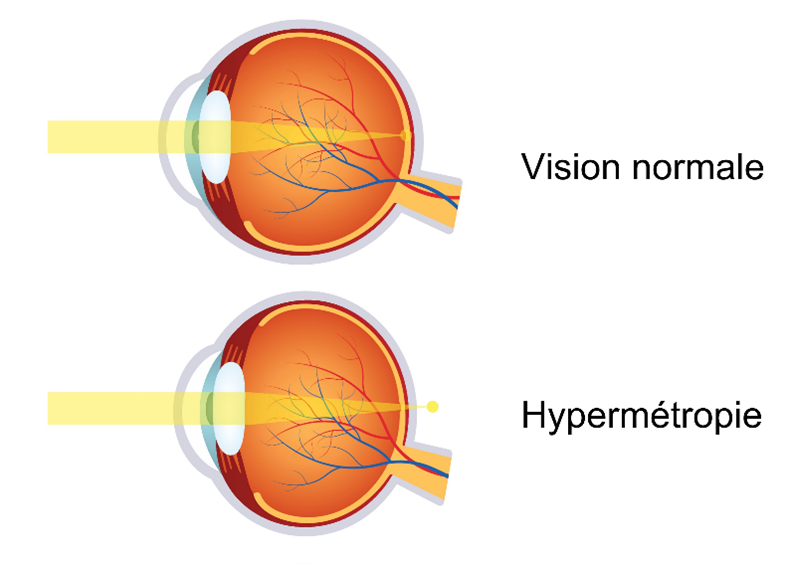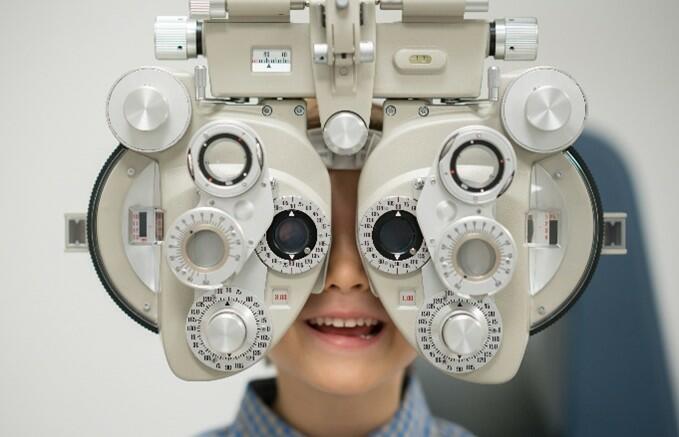Diseases
Hypermétropie

Other terms
- Hyperopia
Definition
Hyperopia is a visual problem caused by an eye that is too short or a cornea that is too flat. Light is therefore focused behind the retina, which can cause blurred vision of close objects.
In children and young adults, hyperopia often goes unnoticed because the crystalline lens can deform, bringing the light rays back to focus on the retina (accommodation). With age, however, the lens becomes rigid and can no longer accommodate as well. As a result, near vision, and even distance vision if hypermetropia is severe, becomes blurred.
Causes
Hyperopia is most often congenital. In rare cases, it is caused by an illness such as diabetes, or it appears following eye surgery.
Symptoms
The signs that should lead you to suspect hypermetropia are as follows:
- blurred vision, particularly at close range
- Visual fatigue and headaches due to the effort of accommodation after prolonged reading, for example.
Note that up to the age of around 30-40, hyperopia is often asymptomatic.
Diagnosis
A simple eye test often fails to detect hypermetropia because of the accommodative power of the crystalline lens. The ophthalmologist must therefore measure refraction using an auto refractometer. The degree of hyperopia is expressed in dioptres or by calculating visual acuity out of 10. Once the measurement has been taken, the refractor is used to determine the correction required.
It should be noted that high hyperopia increases the risk of strabismus and amblyopia in children, particularly if the degree of hyperopia differs between the two eyes. Early detection of hyperopia is therefore essential, particularly in children. However, screening is also important in other population groups, as hyperopic people are at greater risk of developing glaucoma and of developing presbyopia more quickly.
Treatments
Hypermetropia can be corrected with glasses or contact lenses.
In mild forms, glasses are worn only when reading or using a computer.
Surgery may be proposed in certain cases for hypermetropic adults. There are two types of hyperopia surgery:
- Laser surgery, to increase the curvature of the cornea
- Replacement of the crystalline lens with an artificial implant.
Frequency
The prevalence of hyperopia is around 5-10% in the adult population.
References
Hyperopie (hypermétropie) | The Canadian Association of Optometrists
Hypermétropie - Hôpital ophtalmique Jules-Gonin
Hypermétrope : mieux comprendre l'hypermétropie (guide-vue.fr)
Contenu revu et contrôlé le 27.04.2023.



